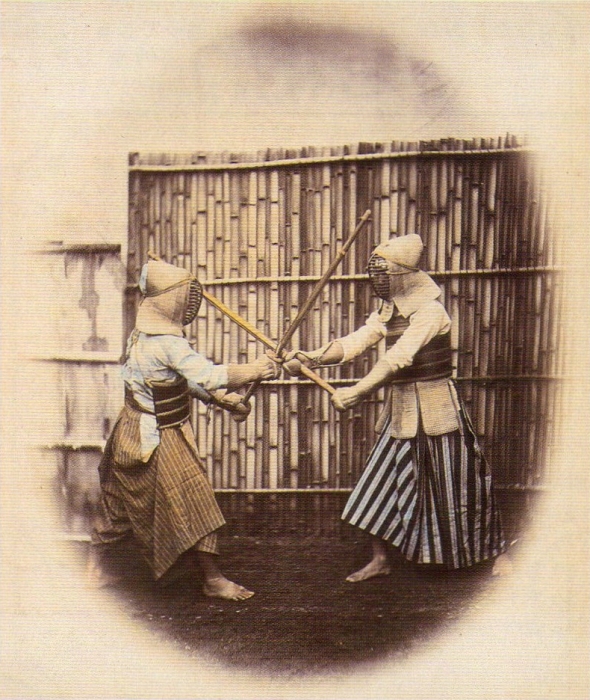In the middle of the 19th century, the Tokugawa shogunate was over, and samurai training, such as swords, to be mastered, or “Budo”, was reorganized into a modern sport. I would like to introduce the “kendo” and the “kyudo”, which is a budo performed in a hakama.
After the end of the civil war in the 17th century, in the era of General Tokugawa, swordsmanship became an established martial arts for Samurai to master. However, some practiced various school styles with wooden swords, and it was forbidden to pull out a real sword and swing it around. At the beginning of the 18th century, armor such as “men” (masks) ,”dou” (torso) and imitation swords made of bamboo developed.

After the Samurai status was dismantled, the practice of swordplay with bamboo swords continued only as a police officer arrest and self-defense technique. At that time, Teshuu Yamaoka (1836-1888) made the style of kendo to the present. Yamaoka emphasized mental training aspects in organizing techniques and training.

So what kind of play is kendo? To get a feel for the image, watch a video of the technique in English.
Next, let’s look at how to wear kendo clothing including Hakama.
Samurai also trained bow martial arts, but it also fell into danger in the mid-19th century when the Samurai class was dismantled. One of its leaders, Kenzo Awa (1880-1939), emphasized mental training, and idealized the state of “shooting arrows with no mind.” This is the stage that Zen aims for.
As both Kendo and Kyudo reorganized into modern sports, leaders sought meaning beyond competition, as human education.

Hakama for Kendo and for Kyudo are similar but not the same. There are differences between men and women. Since each sports enthusiast have knowledge, this blog will not go into detail. The right size can be considered by watching the competition video.
Let’s look at the male and female ratio of the athletic population in Japan.The most popular Japanese budo in the world is judo, but the female population of judo is said to be around 20%. By comparison, Kendo accounts for 30%. But for Kyudo, the gender ratio is 50-50% . There are no gender or age handicap. For this reason, the competition population is almost the same for men and women.

Finally, here’s a promotional video from an kyudo competition organization. It is dignified and beautiful.
